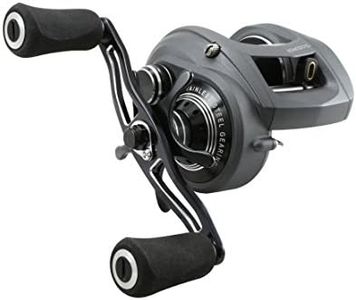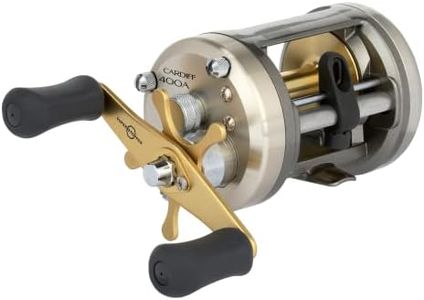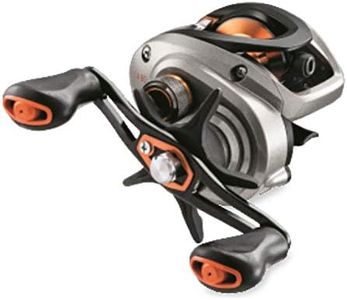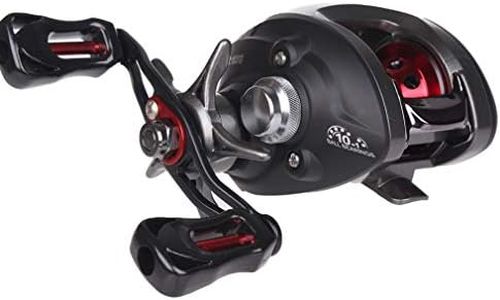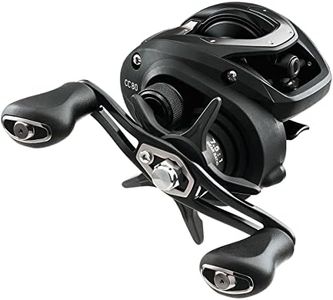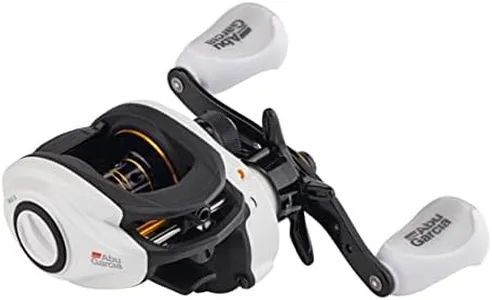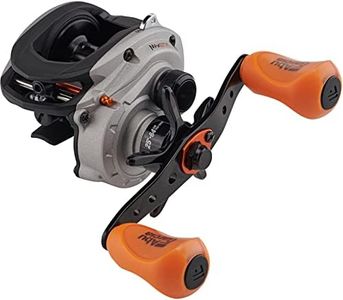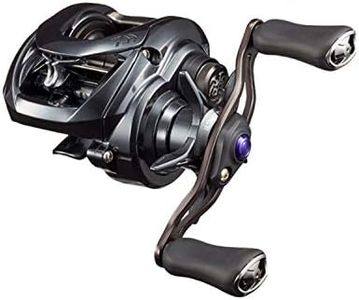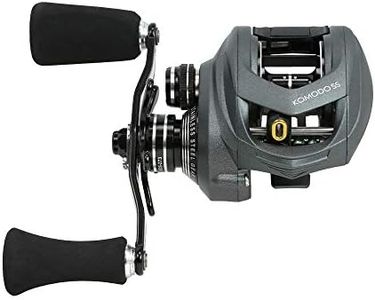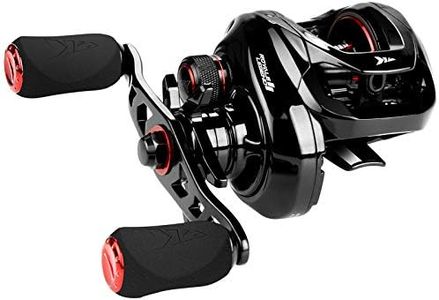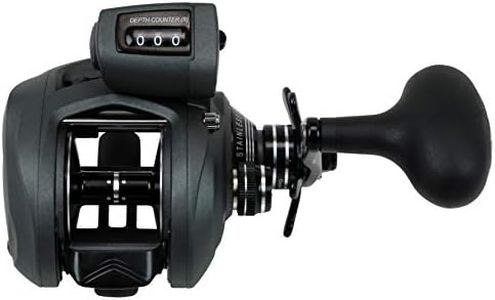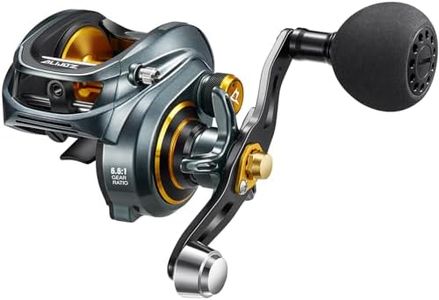We Use CookiesWe use cookies to enhance the security, performance,
functionality and for analytical and promotional activities. By continuing to browse this site you
are agreeing to our privacy policy
10 Best Baitcaster For Beginner
From leading brands and best sellers available on the web.By clicking on a link to a third party's website, log data is shared with that third party.
Buying Guide for the Best Baitcaster For Beginner
Choosing your first baitcaster reel can be exciting, but it also means facing many options that may feel a bit confusing at first. The right baitcaster can help you cast more accurately and handle heavier lures than a simple spinning reel. To get the best fit, understand the key features and how they match your fishing style, comfort level, and target species. By breaking down each important specification, you’ll make a choice that feels right in your hand and boosts your confidence on the water.Gear RatioThe gear ratio tells you how many times the spool turns with one handle crank. For example, a gear ratio of 6.4:1 means the spool spins 6.4 times for every turn of the handle. Higher ratios (like 7:1 or above) pick up line faster, which is good for quick lure retrieves or when targeting fast-moving fish. Lower ratios (around 5:1) offer more power, making it easier to reel in big fish or heavy lures. Beginners often find mid-range ratios (6:1 to 6.4:1) offer a nice balance for various techniques without being too fast or slow.
Braking SystemA baitcaster’s braking system helps control how fast the spool spins during casting, which prevents backlash (messy tangles of line). There are magnetic and centrifugal brakes, and sometimes both are combined. Magnetic brakes are easy to adjust with an outside dial and work well for beginners because they’re simple and accessible. Centrifugal brakes are inside the reel, giving more fine-tune control but requiring you to open the side plate. For first-timers, a reel with easily adjustable external brakes is ideal so you can quickly make changes as you practice.
Spool Size/Line CapacitySpool size and line capacity refer to how much fishing line your reel can hold. Larger spools carry more line and work better for heavy lures or when targeting bigger fish, but they can make the reel heavier and bulkier. Smaller spools are lighter and good for lighter lines or smaller fish. Beginners usually do best with medium-capacity spools, as these give enough line for most freshwater fishing scenarios without making the reel cumbersome.
Frame MaterialThe frame material affects the weight, strength, and durability of your baitcaster. Most common materials are graphite and aluminum. Graphite frames are lighter and affordable, making them comfortable and easy for beginners during long fishing sessions. Aluminum is stronger and more durable, but often heavier. If you’re starting out or plan to fish occasionally, light graphite frames strike a good balance, while more serious anglers might look toward aluminum when they’re ready to invest in long-term gear.
Handle ComfortThe comfort of the handle impacts how easy it is to fish for long periods without fatigue. Handles come in different sizes and shapes, with knobs made from foam, rubber, or cork. Larger, cushioned handles make it easier for beginners to keep a good grip and reduce hand strain. Choose a handle that feels comfortable when holding and cranking, as this will make your learning experience more enjoyable.
Drag SystemThe drag system controls how much resistance a fish feels when pulling on your line. A smooth, adjustable drag helps prevent line breakage and gives you more control during a fight. Beginners should look for a baitcaster with a simple, reliable drag that’s easy to adjust. Ideally, you want a drag range suited to the size of fish you plan to catch—the system should feel smooth when tightened or loosened, and there shouldn’t be sudden jerks when a fish runs.
Ease of Use/SetupSome baitcasters are designed for advanced features and tweaking, while others offer straightforward setup and operation. As a newcomer, pick a reel that doesn’t require complex tuning before every outing. Look for models labeled as beginner-friendly or those with clear instructions, as these let you focus on learning technique rather than fiddling with gear settings.
